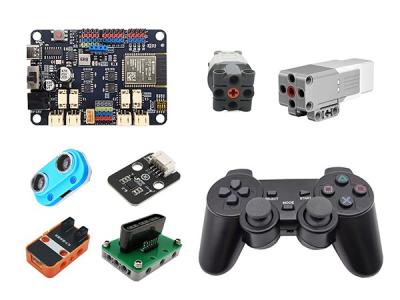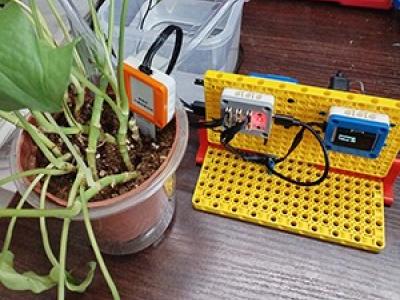NodeMCU-32S MicroPython固件的使用
第一步 下载固件
- 进入MicroPython的官网
- 选择上方的DOWNLOAD跳转到下载页面
- 这里会有很多设备的固件版本,选择自己的版本,这里我下载的是:
【Firmware for ESP32 boards】
esp32-20171114-v1.9.2-443-g236297f4.bin (latest)
第二步 安装Python环境
- 再Python官网下载Python安装包,安装即可.
第三步 烧录固件
-
插上开发板后查看,在设备管理器中查看端口(Windows+R 输入devmgmt.msc),如果未识别需要下载安装驱动,记住这里的端口号(如:COM3).
-
打开命令行依次执行
-
(1) 安装esptool 输入:
pip install esptool
- (2)擦除FLASH,把原来芯片程序擦除
( COM3 替换为自己的端口)
esptool.py --port COM3 erase_flash
- (2)写入固件
(COM3 替换为自己的端口,C:\esp32-20171102-v1.9.2-443-g236297f4.bin替换为自己的固件路径)
esptool.py --port COM3 --baud 115200 write_flash -z 0x1000 C:\esp32-20171102-v1.9.2-443-g236297f4.bin --verify
第四步 使用串口工具调试
- 连接串口工具输入help(),输出以下内容说明固件已经烧录成功了
Welcome to MicroPython on the ESP32!
For generic online docs please visit http://docs.micropython.org/
For access to the hardware use the 'machine' module:
import machine
pin12 = machine.Pin(12, machine.Pin.OUT)
pin12.value(1)
pin13 = machine.Pin(13, machine.Pin.IN, machine.Pin.PULL_UP)
print(pin13.value())
i2c = machine.I2C(scl=machine.Pin(21), sda=machine.Pin(22))
i2c.scan()
i2c.writeto(addr, b'1234')
i2c.readfrom(addr, 4)
Basic WiFi configuration:
import network
sta_if = network.WLAN(network.STA_IF); sta_if.active(True)
sta_if.scan() # Scan for available access points
sta_if.connect("<AP_name>", "<password>") # Connect to an AP
sta_if.isconnected() # Check for successful connection
Control commands:
CTRL-A -- on a blank line, enter raw REPL mode
CTRL-B -- on a blank line, enter normal REPL mode
CTRL-C -- interrupt a running program
CTRL-D -- on a blank line, do a soft reset of the board
CTRL-E -- on a blank line, enter paste mode
For further help on a specific object, type help(obj)
For a list of available modules, type help('modules')
- 上面micropython输出的欢迎界面内容仔细看下会发先,不仅列出了文档地址,还提供了几个示例代码,注意在最后两行的帮助命令
For further help on a specific object, type help(obj)
For a list of available modules, type help('modules')
- help('modules') #会列出所有的模块
help('modules')
main framebuf re upip
_boot gc select upip_utarfile
_onewire hashlib socket upysh
_thread heapq ssl urandom
apa106 inisetup struct ure
array io sys urequests
binascii json time uselect
btree machine ubinascii usocket
builtins math ucollections ussl
cmath micropython uctypes ustruct
collections neopixel uerrno utime
dht network uhashlib utimeq
ds18x20 ntptime uheapq uzlib
errno onewire uio zlib
esp os ujson
flashbdev random uos
Plus any modules on the filesystem
- help(obj) #会列出这个对象的提供方(help(obj)前需要先import obj 这个模块).
help(network)
object <module 'network'> is of type module
name -- network
init -- <function>
WLAN -- <function>
LAN -- <function>
phy_mode -- <function>
STA_IF -- 0
AP_IF -- 1
MODE_11B -- 1
MODE_11G -- 2
MODE_11N -- 4
AUTH_OPEN -- 0
AUTH_WEP -- 1
AUTH_WPA_PSK -- 2
AUTH_WPA2_PSK -- 3
AUTH_WPA_WPA2_PSK -- 4
AUTH_MAX -- 6
PHY_LAN8720 -- 0
PHY_TLK110 -- 1
- 具体模块请参考源码 GitHub
- 最后我们需要熟悉python语法结合help()给我们的提示,就可以简单的使用MicroPython来操作NodeMCU-32S了
涨知识
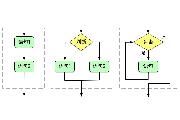
结构化编程
结构化程序设计是采用顺序结构、选择结构(IF语句)、循环结构(FOR,WHILE语句)、子程序等来进行程序设计的一种编程典范。
评论:
ESP32 WebServer库处理表单请求
本文主要讲解WebServer库如何来处理表单请求。
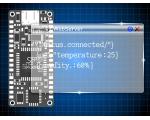
在esp32上运行WebServer
WebServer是非常常用的一个功能,在设备上使用该功能可以直接通过浏览器访问和操作设备。
Arduino-ESP32与ESP-IDF的版本对应表
Arduino-ESP32与ESP-IDF的版本对应表。
Arduino-ESP32文件系统全解析:SPIFFS、LittleFS、SD卡操作
Arduino-ESP32提供了多种文件系统解决方案,本文将深入解析SPIFFS、LittleFS和SD卡三种主流存储方案,帮助你做出最佳选择。
ESP32-P4-WIFI6开发板
ESP32-P4-WIFI6-DEV-KIT是一款微雪(Waveshare)设计的基于 ESP32-P4 的多媒体开发板,并集成 ESP32-C6,支持 Wi-Fi 6 和 BLE 5 无线连接。它提供丰富的人机交互接口,包括 MIPI-CSI (集成图像信号处理器 ISP)、MIPI-DSI、SPI、I2S、I2C、LED PWM、MCPWM、RMT、ADC、UART 和 TWAI 等。
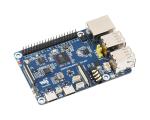
ESP-Hosted 入门介绍 &使用指南
ESP-Hosted 解决方案提供了将 ESP 板用作 Wi-Fi 和 Bluetooth/BLE 连接的通信处理器的方法。
设备上云太麻烦?ESP-Hosted一站触达!
ESP-Hosted 提供了一种将ESP芯片和模组用作通信协处理器的解决方案,该解决方案为主机微处理器或微控制器提供无线连接,使主机能够与其他设备通信。简单来说为网卡方案。
ESP32 + Arduino使用TFT_eSPI库
Arduino+ESP32上使用TFT_eSPI库快速点亮这个屏幕,驱动芯片ST7789
ESP32 利用 SPI 连通 TFT 彩屏
本文给出了一个ESP32与SPI 接口TFT显示屏接线的详细说明,供大家参考。





